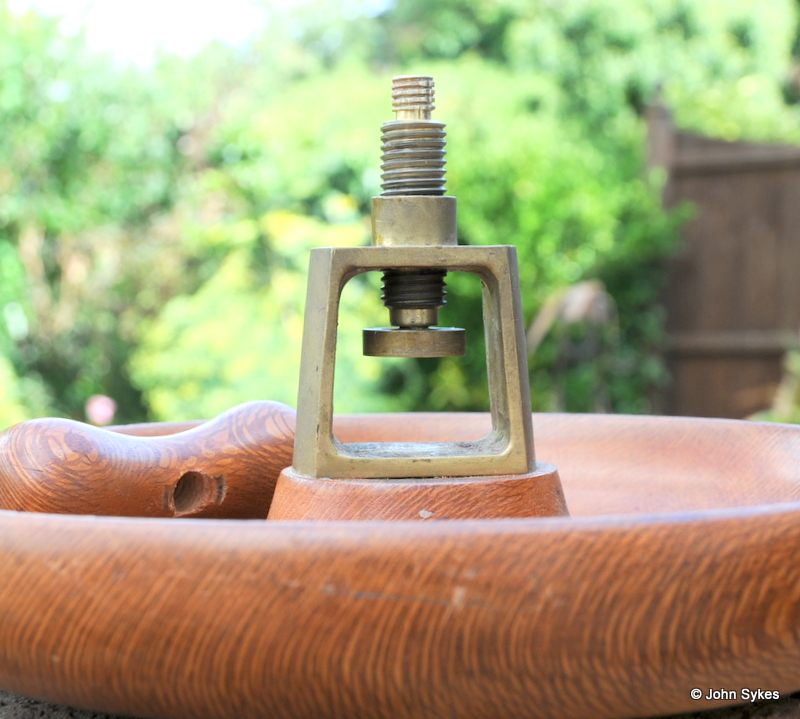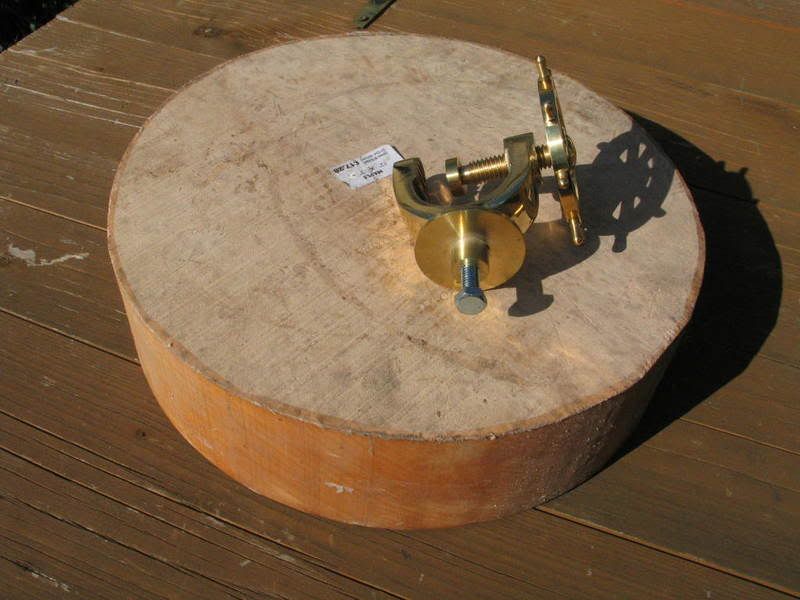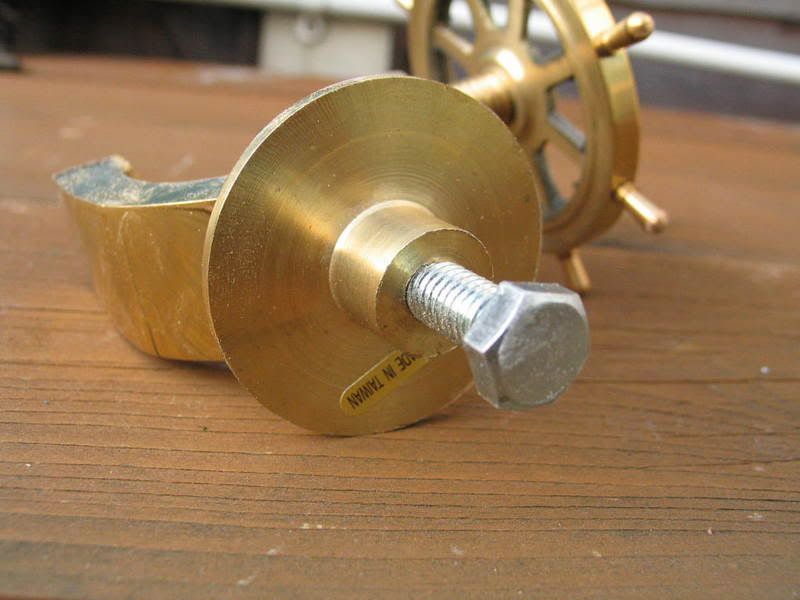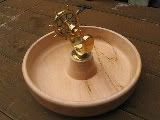I hope no-one thinks this is off-topic, as the question below relates not to the nicely-turned bowl, but more specifically to the brass nut-cracker accessory.
Background: asked to fix this for a friend.
Description: Turned plane(?) = lacewood (?) bowl with brass nut-cracker mechanism in the form of a cast frame with a threaded brass screw:

The turned cross-handle has a stripped thread due to the torque required to crush the nuts/elicit a confession* :?
Now, you'd think that the designer would have the brass "crusher" disc (which appears solid from the nut's perspective) free to rotate, to reduce the friction when turning the cracker.
Also, the cast frame is just that: one piece, so the disc must have been added after the screw thread was dropped (screwed) in from the top.
However, when I attempted to remove /free the disc, I found that it was completely solid. A couple of downward taps with a soft drift had no effect, so I lubricated the main thread, stuck a couple of PTFE rods between the disc and underside of the frame, and then attempted to screw the screw up & out to drive the disc off the end. No joy.
Finally, I wondered if the disc was itself threaded onto the end of the primary screw, so I bored a hole just larger than the OD of aforesaid disc in a piece of 9mm Tufnol sheet, split across the diameter with the saw, and used a long 4BA screw to clamp the Tufnol around the circumference of the disc. Then attempted to "unscrew" the disc from the primary screw. No joy (LH or RH).
Does anyone happen to know how this might have been assembled in the first place? It may be that the brass assembly was some proprietary bought-in part.
Many thanks in anticipation!
John
* CIA version
Background: asked to fix this for a friend.
Description: Turned plane(?) = lacewood (?) bowl with brass nut-cracker mechanism in the form of a cast frame with a threaded brass screw:

The turned cross-handle has a stripped thread due to the torque required to crush the nuts/elicit a confession* :?
Now, you'd think that the designer would have the brass "crusher" disc (which appears solid from the nut's perspective) free to rotate, to reduce the friction when turning the cracker.
Also, the cast frame is just that: one piece, so the disc must have been added after the screw thread was dropped (screwed) in from the top.
However, when I attempted to remove /free the disc, I found that it was completely solid. A couple of downward taps with a soft drift had no effect, so I lubricated the main thread, stuck a couple of PTFE rods between the disc and underside of the frame, and then attempted to screw the screw up & out to drive the disc off the end. No joy.
Finally, I wondered if the disc was itself threaded onto the end of the primary screw, so I bored a hole just larger than the OD of aforesaid disc in a piece of 9mm Tufnol sheet, split across the diameter with the saw, and used a long 4BA screw to clamp the Tufnol around the circumference of the disc. Then attempted to "unscrew" the disc from the primary screw. No joy (LH or RH).
Does anyone happen to know how this might have been assembled in the first place? It may be that the brass assembly was some proprietary bought-in part.
Many thanks in anticipation!
John
* CIA version



































